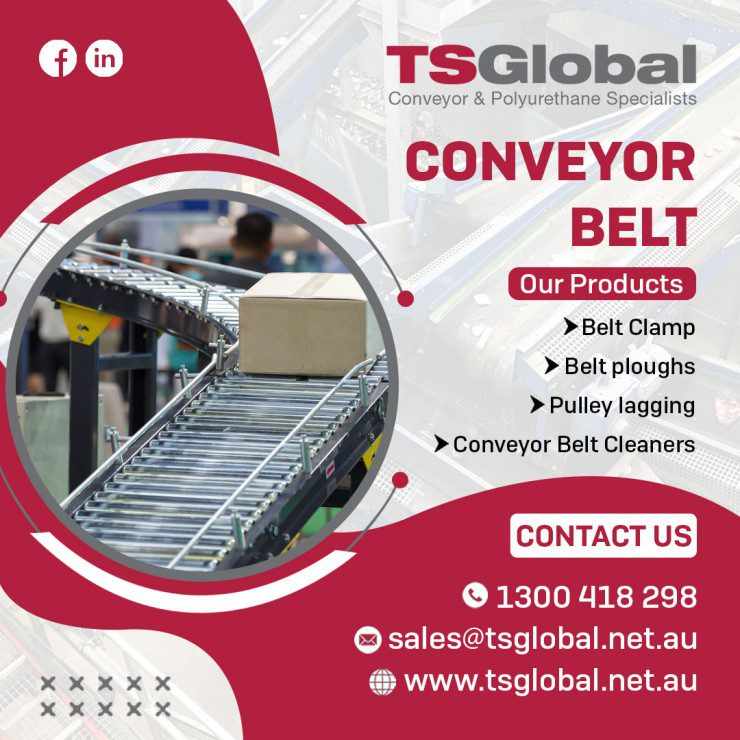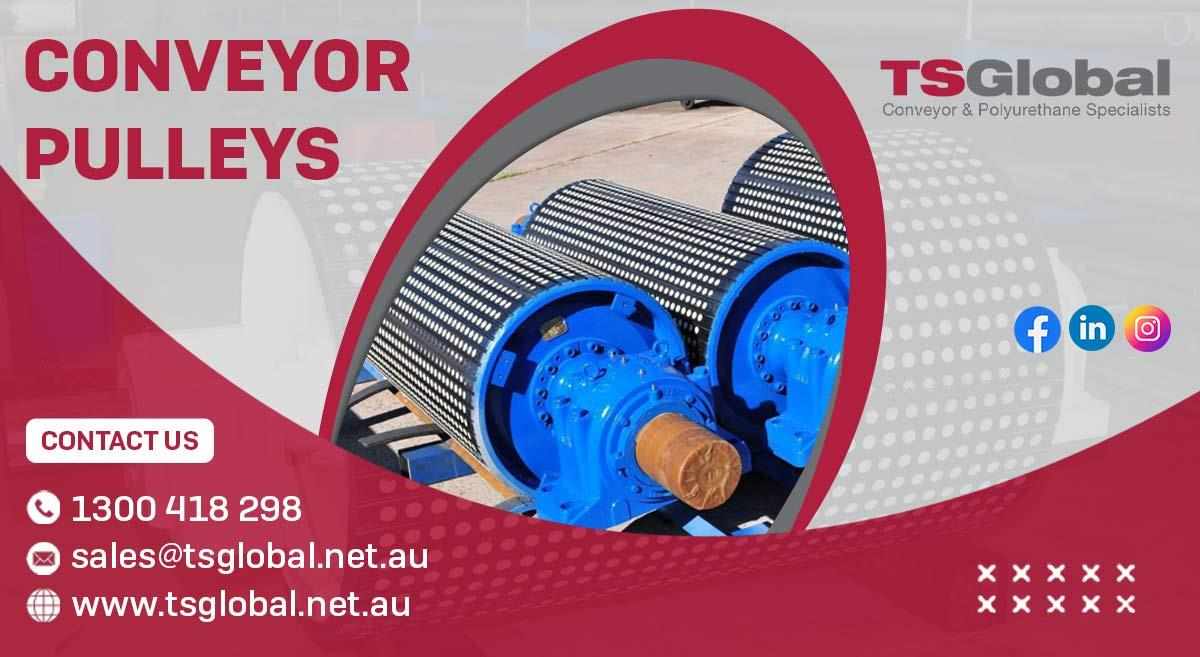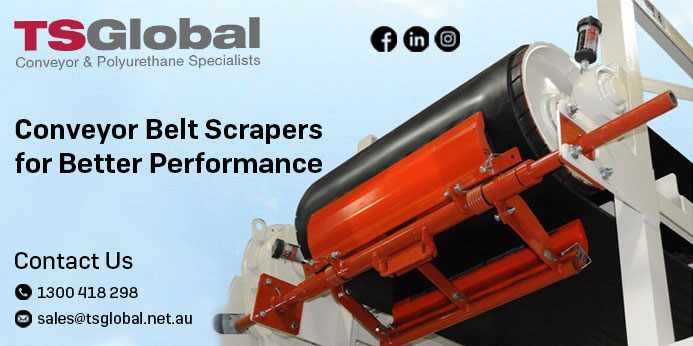
Maximizing Efficiency and Longevity with Conveyor Belt Cleaners
Conveyor belts are an integral component of many industries, from mining and manufacturing to food processing and packaging. They streamline the movement of materials, reduce labor costs, and boost productivity. However, like any machinery, conveyor belts are not immune to wear and tear, especially when they handle a wide variety of materials. Over time, residue, dust, and debris accumulate on the belt, reducing its efficiency and causing costly repairs.
The solution to this issue is the use of conveyor belt cleaners. These cleaners are essential for maintaining system performance and extending the lifespan of conveyor belts. In this blog, we'll explore the significance of conveyor belt cleaners, how they work, the different types available, and how to choose the right cleaner for your specific needs.
The Role of Conveyor Belt Cleaners
A conveyor belt cleaner is a device designed to scrape off residual material and debris from the belt as it moves through the system. Its primary purpose is to maintain a clean and efficient surface for material handling, ensuring the belt operates smoothly without unnecessary friction or strain. Here's why conveyor belt cleaners are indispensable:
Optimized Efficiency: A clean belt reduces friction, allowing the belt to move freely and transport materials more efficiently. When residue builds up, it can cause the belt to drag, slowing down operations and requiring more energy to run the system.
Minimized Wear and Tear: Materials left on the belt can cause uneven wear on both the belt itself and the conveyor system components, such as pulleys and rollers. Over time, this leads to a shortened lifespan for the equipment and increased maintenance costs.
Prevention of Material Carryback: Carryback occurs when materials are not fully discharged from the belt and remain attached to the surface, being carried back into the return side of the conveyor. This not only wastes materials but can also cause blockages and damage to the system.
Enhanced Safety: Material buildup can lead to dangerous spills around the conveyor system, creating potential hazards for workers. By keeping the belt clean, you can reduce the risk of slip-and-fall accidents and maintain a safer work environment.
Cost Reduction: Regular cleaning of the conveyor belt reduces the need for frequent maintenance and repairs, leading to cost savings in the long run. Additionally, a cleaner belt consumes less energy, further reducing operational costs.
Types of Conveyor Belt Cleaners
There are several types of conveyor belt cleaners available, each suited to different types of materials and operational environments. These cleaners are usually categorized into three primary groups: primary, secondary, and tertiary cleaners.
1. Primary Belt Cleaners
Primary belt cleaners are typically installed at the head pulley, the point where the material is discharged. Their main function is to remove the bulk of the material stuck to the belt.
Blade Scrapers: Blade scrapers are one of the most common types of primary cleaners. They consist of one or more blades made from materials like polyurethane, steel, or tungsten carbide. These scrapers are highly effective for removing large chunks of debris, such as gravel or coal, that tend to stick to the belt surface.
V-Plows: V-Plow cleaners are installed before the tail pulley and are designed to prevent large pieces of material from getting trapped between the belt and pulley. They are effective for removing larger debris, such as rocks, which could cause damage to the conveyor system.
2. Secondary Belt Cleaners
Secondary cleaners are installed behind the primary cleaner on the return side of the belt. Their purpose is to remove any smaller particles or residual materials that were not caught by the primary cleaner.
Tungsten Carbide Scrapers: These are harder, more durable scrapers designed to tackle difficult materials, such as sticky or moist substances like clay, tar, or fine dust. They are especially useful for applications where the primary cleaner is unable to remove all the material.
Brush Cleaners: Brush cleaners use rotating brushes to sweep off fine particles and dust from the belt. These cleaners are effective for applications where the material is very fine or light, such as in food processing or packaging industries.
3. Tertiary Belt Cleaners
Tertiary cleaners are used in demanding applications where more than two levels of cleaning are required. They are often a combination of different cleaners, such as blade scrapers and brushes, providing thorough cleaning of the conveyor belt.
Factors to Consider When Choosing a Conveyor Belt Cleaner
Selecting the right conveyor belt cleaner for your system can have a significant impact on its performance and longevity. The cleaner you choose should be tailored to the specific needs of your application. Below are some key factors to consider:
1. Type of Material Being Conveyed
The type of material that your conveyor belt handles plays a critical role in determining the cleaner you need. Coarse materials, such as coal or gravel, require more robust blade scrapers, while sticky or wet materials like clay or cement may need secondary or tertiary cleaners with additional scraping power.
2. Conveyor Belt Speed and Width
Faster conveyor belts require cleaners that can keep up with the speed without wearing out too quickly. In addition, the width of your belt should match the size of the cleaner. Wider belts may require larger or multiple cleaners to cover the entire surface.
3. Operating Environment
The environment in which your conveyor operates also affects the type of cleaner you need. For example, in wet or corrosive conditions, polyurethane cleaners may be more suitable due to their resistance to rust and moisture. In abrasive environments, cleaners made from more durable materials like tungsten carbide are recommended to withstand harsh conditions.
4. Maintenance Requirements
Some cleaners require more frequent maintenance or adjustments than others. When selecting a cleaner, consider how easy it will be to maintain and whether you have the resources for regular upkeep. Cleaners that are difficult to maintain may lead to higher costs in the long term due to increased downtime or repairs.
5. Belt Condition
If your conveyor belt is older or shows signs of wear and tear, you may need a softer cleaner to avoid further damage. A harder scraper can cause additional wear on an already weakened belt, while a more flexible cleaner, like a brush, might be gentler on the system.
Benefits of Regular Maintenance and Proper Cleaning
The benefits of using conveyor belt cleaners are clear, but regular maintenance and proper installation are equally important. Ensuring that your belt cleaners are correctly installed and functioning optimally can further extend the life of your conveyor belt system.
Reduced Downtime: A clean belt reduces the need for frequent stoppages to clear debris and perform repairs, allowing your production line to run more smoothly with less interruption.
Extended Equipment Life: Keeping the conveyor belt and its components free of debris prevents unnecessary wear and tear, extending the life of the system. This reduces the frequency of component replacements and major repairs.
Improved Product Quality: In industries such as food processing or pharmaceuticals, where cleanliness is paramount, properly cleaned belts help ensure that your products are free from contamination, improving overall quality and safety.
Conclusion
Conveyor belt cleaners are an essential tool for maintaining the efficiency, safety, and longevity of conveyor systems. They prevent material buildup, reduce wear and tear, and enhance the overall performance of the belt. By understanding the different types of cleaners available and the factors that affect their performance, you can make an informed decision that will optimize your conveyor system.
Selecting the right conveyor belt cleaner and maintaining it properly not only minimizes downtime and lowers maintenance costs but also extends the life of your equipment. In the long run, this results in smoother operations, increased productivity, and significant cost savings, making conveyor belt cleaners a crucial investment for any industry that relies on conveyor systems

















.jpeg)


Write a comment ...